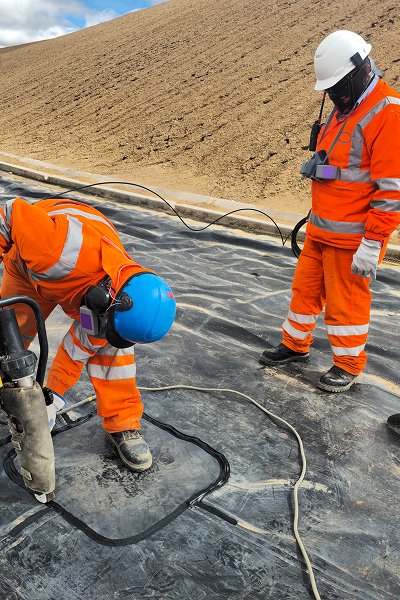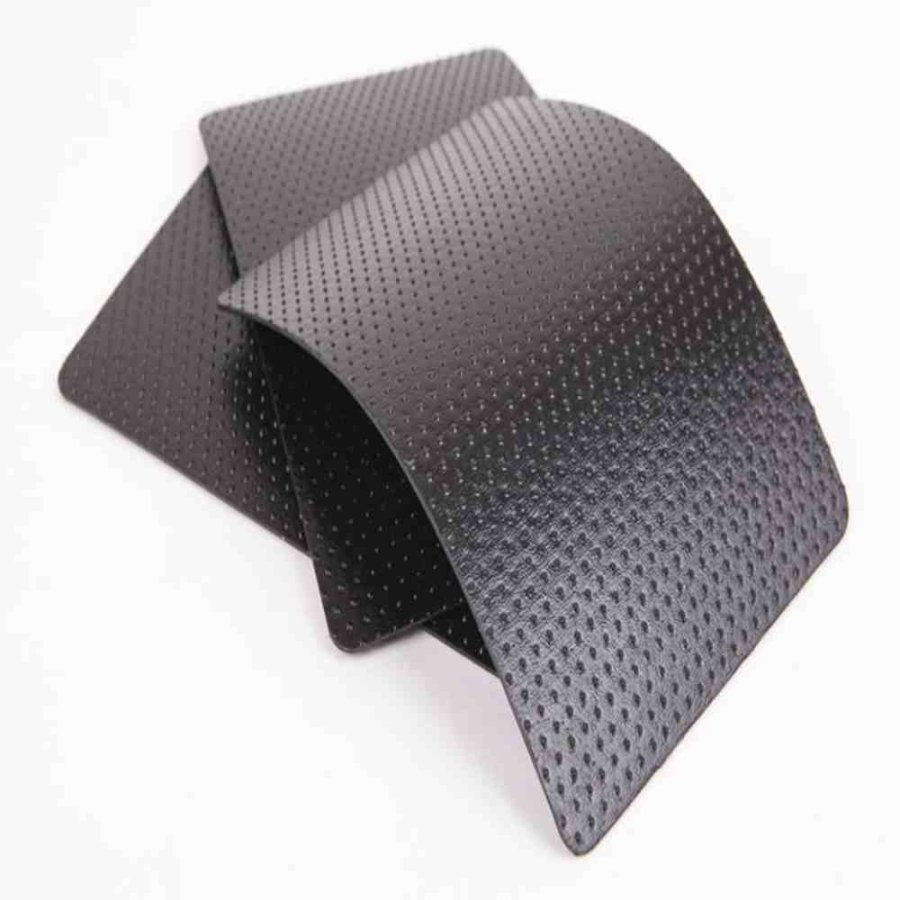
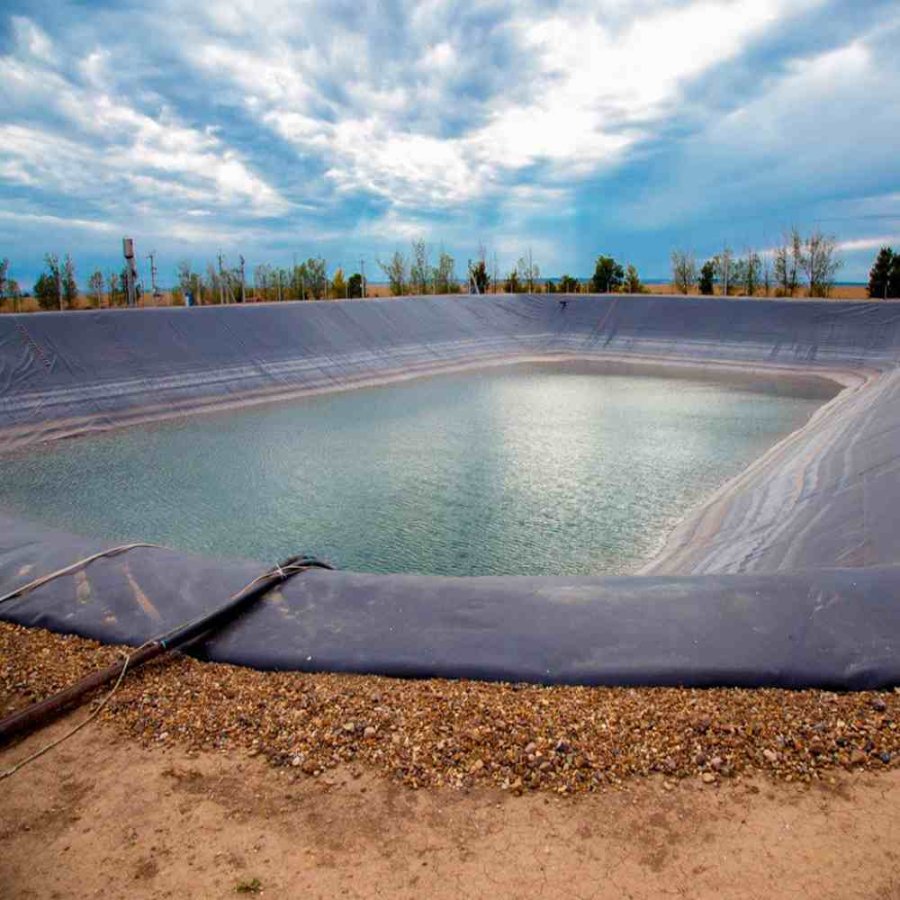
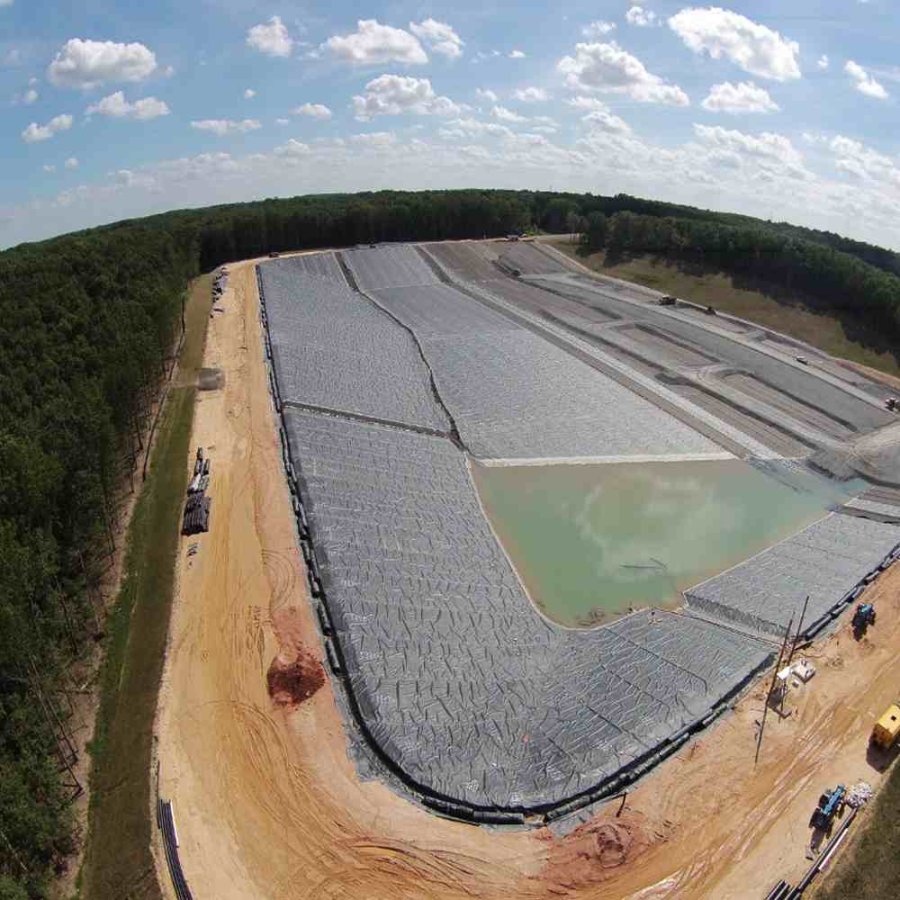
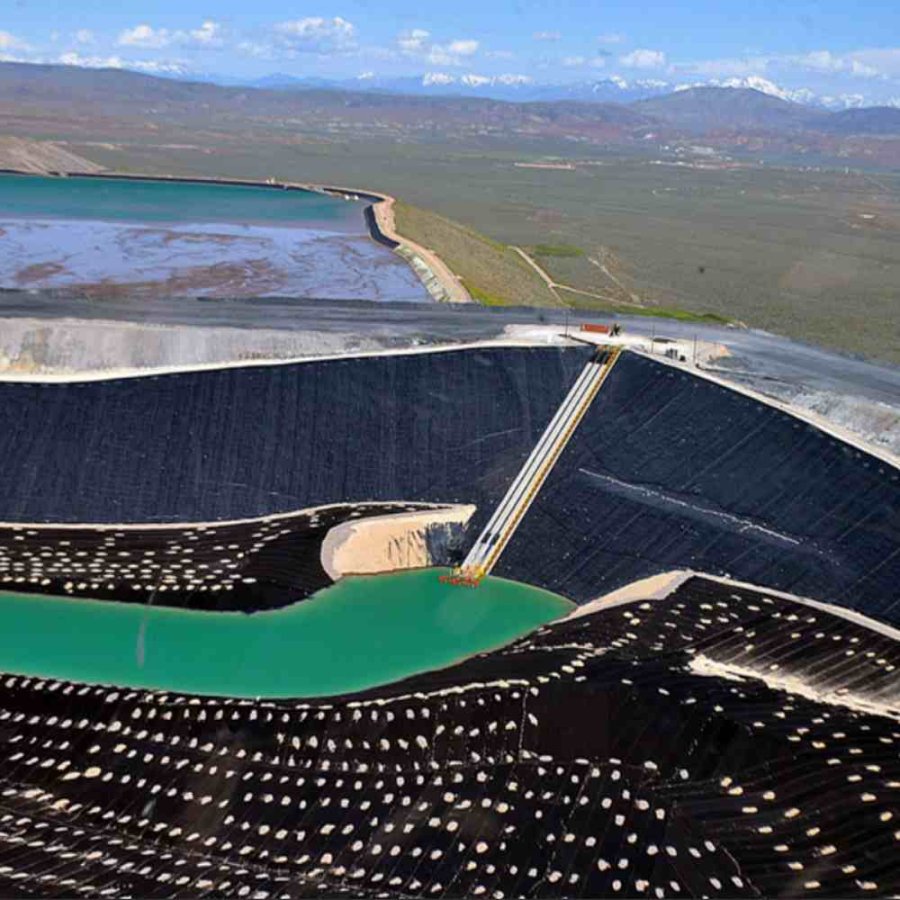

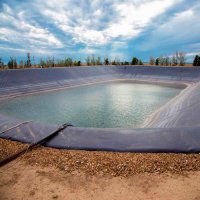
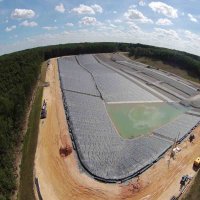
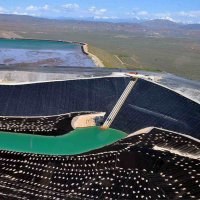
Geomembrane liner waterproof and anti-seepage material has high anti-seepage performance, chemical corrosion resistance, aging resistance and mechanical strength. It is widely used in anti-seepage projects such as landfills, reservoirs, artificial lakes, sewage treatment pools, and mine tailings ponds.
Features:
Excellent impermeability:Low permeability coefficient (≤1×10⁻¹³ cm/s), effectively preventing water leakage and ensuring long-term water retention in the reservoir.
High strength and weather resistance:High tensile strength (longitudinal/lateral ≥25MPa), UV resistance, anti-aging, adaptable to -60℃~60℃ extreme environment.
Chemical stability:Acid and alkali resistant, corrosion resistant, suitable for contact with chemical substances such as sewage and fertilizers.
Environmentally friendly and non-toxic:Complies with GB/T 17643-2011 standard, no harmful additives, no pollution to water quality.
Geomembrane liner Application Fields:
Agricultural water conservancy; irrigation reservoirs, reservoirs, channel anti-seepage, water resource conservation, and prevention of irrigation leakage losses.
Aquaculture; anti-seepage at the bottom of fish ponds, shrimp ponds, and sea cucumber pens, maintaining water levels, and reducing disease pollution.
Environmental protection projects: sewage treatment pools, oxidation ponds, landfill liners, anti-seepage and anti-leakage to avoid groundwater pollution.
Landscape and municipal administration; artificial lakes, wetland parks, river channel regulation, low-cost landscaping, and maintenance of ecological water quality.
Industrial use; chemical liquid storage pools, tailings ponds, evaporation pools, corrosion resistance, to ensure the safe storage of hazardous liquids.




Geomembrane liner Customized Service:
Specification customization: HDPE geomembrane liner with different heights, weld distances, sheet thicknesses, colors, etc. can be customized according to customer needs.
Connector customization: Connectors with different materials and specifications can be customized according to customer needs.
Packaging customization: Different packaging methods can be customized according to customer needs, such as roll packaging, pallet packaging, etc.
Production scenario:
Raw material preparation: Select high-quality HDPE raw materials and undergo strict quality inspection.
Sheet production: Process HDPE raw materials into sheets.
Ultrasonic welding: Use advanced ultrasonic welding equipment to weld the sheets into a three-dimensional mesh structure.
Quality inspection: Strict quality inspection of finished products to ensure that the products meet national standards and customer requirements.
Shipping scenario:
Logistics and transportation: Use professional logistics and transportation methods to ensure that products are delivered to customers safely and promptly.
On-site guidance: Provide professional on-site guidance services to assist customers in product laying and construction.




Certificates:
Product quality certification: Passed ISO9001 quality management system certification, CE certification, etc.
Product test report: Provide product test reports issued by authoritative organizations.




FAQ:
Q: How to choose the right geomembrane liner?
A: Consider impermeability: HDPE has the strongest impermeability and is suitable for highly polluted environments.
Consider flexibility: LLDPE and PVC are more suitable for complex terrains.
Chemical resistance: HDPE is acid and alkali resistant and suitable for the chemical industry.
UV resistance: Black HDPE has the best UV resistance.
Q: What is the construction process of geomembrane liner?
A: Foundation treatment: Clean the site to ensure that it is flat and free of sharp objects.
Laying the liner: Unfold according to design requirements to avoid wrinkles.
Welding/bonding: Use hot melt welding (HDPE/LLDPE) or adhesive bonding (PVC/EPDM).
Quality inspection: Conduct spark detection or air pressure testing to ensure no leakage.
Protective layer coverage: Lay geotextile or sand and gravel protective layer to prevent mechanical damage.
Q: How to detect the anti-seepage effect of geomembrane liner?
A: Visual inspection: Observe whether there are damage, holes or welding defects.
Spark detection (applicable to conductive geomembranes): detect tiny leaks.
Vacuum box detection: negative pressure test on welds.
Hydraulic pressure test (applicable to pools): inject water to observe leakage.
Q: How long is the service life of geomembrane liner?
A: HDPE liner: more than 50 years (under buried conditions).
Q: How to repair damaged geomembrane liner?
A: Small holes: use special patches + hot air welding or adhesives.
Large-scale damage: re-weld new membrane after cutting.
Weld crack: clean and re-weld.
 Black fish pond protection 1.2/1.5mm ASTM standard geomembrane
Black fish pond protection 1.2/1.5mm ASTM standard geomembrane
Black Fish Pond Protection 1.2/1.5MM ASTM standard geomembrane is a high-strength geosynthetic material specially used for water protection, such as fish ponds, artificial lakes and other water conservancy facilities. It uses high-density polyethylene with excellent anti-seepage and UV resistance, which can effectively prevent water leakage and prevent external pollutants from entering the water.
 Pond water seepage prevention 1.0mm geomembrane liner
Pond water seepage prevention 1.0mm geomembrane liner
Geomembrane liner waterproof and anti-seepage material has high anti-seepage performance, chemical corrosion resistance, aging resistance and mechanical strength. It is widely used in anti-seepage projects such as landfills, reservoirs, artificial lakes, sewage treatment pools, and mine tailings ponds.
 HDPE Geomembrane
HDPE Geomembrane
HDPE geomembrane (high-density polyethylene geomembrane) is a waterproof and anti-seepage material made by blowing or calendering process. It has excellent anti-seepage performance, chemical corrosion resistance, aging resistance and mechanical strength, and is widely used in anti-seepage projects such as landfills, reservoirs, artificial lakes, sewage treatment pools, and mine tailings ponds.


